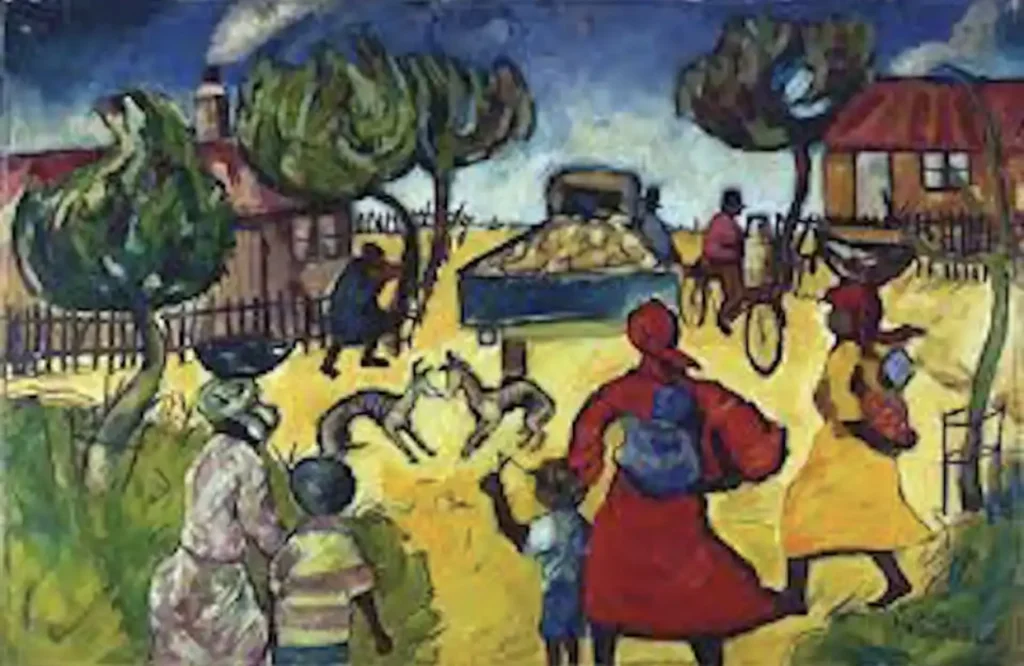Louis Khehla Maqhubela, was a pioneering South African artist, born in 1939 in Durban. His legacy is important as he paved the way for South Africa’s urban black “township artists” of the 1950s, 60s, and 70s. His practice offered a move away from prescriptive expressionism towards an internationalist style.
Maqhubela studied at Goldsmiths College and the Slade School of Art where he was introduced to printmaking. He also studied at the Polly Street Art Centre under the direction of Cecil Skotnes and sculptor Sydney Kumalowas. The art centre which was housed in a hall in Johannesburg placed a focus on black art students. It exhibited artists of all races, therefore going against what was the norm during the apartheid South Africa when the white minority government racially segregated black citizens and moved them into townships outside of cities. Maqhubela was also a member of artist and teacher Durant Sihlali’s weekend artists group, and from 1957 to 1959.

Although Maqhubela worked as a commercial artist, he started receiving commissions in 1960 to create paintings and mosaics in schools, hospitals, halls, and bar lounges in and around Soweto. He got a commission with the help of Skotnes to create four large-scale oil paintings for public buildings. The only one still standing is Township Scene (1961). The artwork showcases vitality, incredible attention to detail, and a bold use of non-descriptive colors in an expressive way that sets it apart from the conventional depictions of black township life that was prevalent at the time.
Maqhubela’s work was in high demand and he excelled regardless of the hostile apartheid environment he was living in. In 1966, He won first prize at the Adler Fielding Gallery’s annual ‘Artists of Fame and Promise’ exhibition with Peter’s Denial, a monumental conté drawing called. Part of his prize was a return air ticket to Europe. The time he spent in Europe impacted his life and work in a transformative way. He learned a lot from his meetings with the masters of Modernism and abstraction in the great museums and galleries.

His style moved from figurative expressionism, which emphasized the human form, to the exploration of modernist abstraction with forms and shapes. Parallel to that, he developed a unique artistic language and iconography that demonstrated his search for spiritual growth. His oil paintings on canvas or paper from the 1970s were rendered with thinly layered paint applied through scraffito. He also created a series of etchings that are considered some of his most notable works.
To escape apartheid South Africa, he relocated with his family to the Spanish island of Ibiza in 1973, and later settled in London in 1978. Despite this, he continued to showcase his work in South Africa, both in group and solo exhibitions, and was prominently featured in Esmé Berman’s book, “The Story of South African Painting” in 1975. Maqhubela is represented in all the major public collections in South Africa. In terms of his style, he had no immediate successors, probably because his art was too personal and enigmatic to imitate. Nonetheless, his art served as a source of inspiration for his fellow countrymen and artists worldwide, because he had a deep understanding that there is a world that exists beyond the immediate and visible, and that it could be revealed through art.


